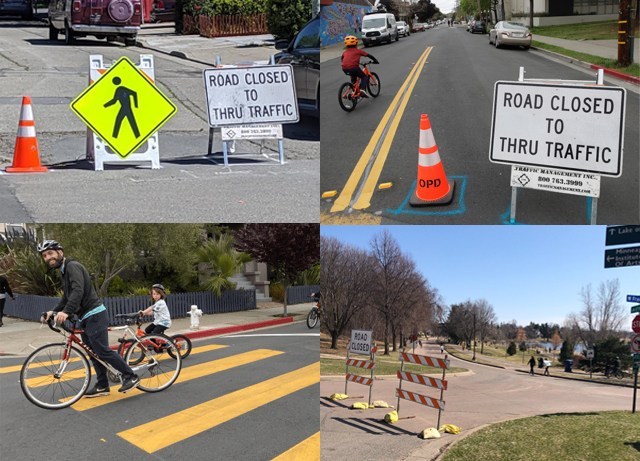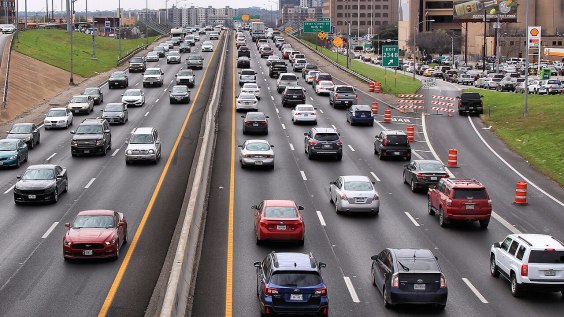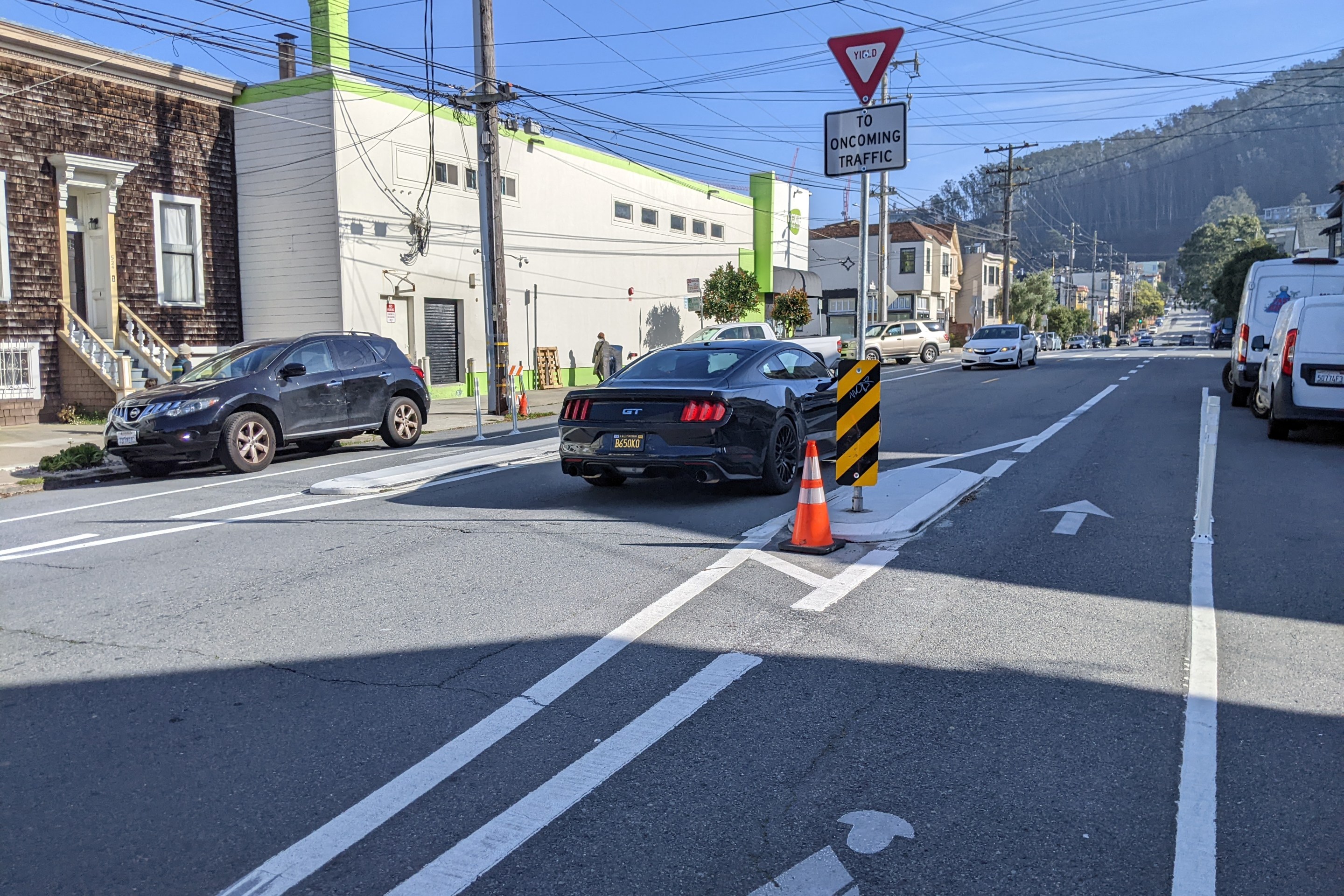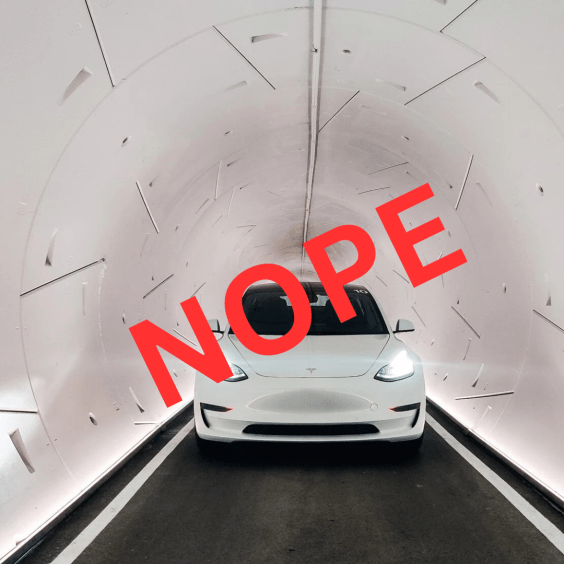The day after Oakland announced it would close 74 miles of streets to thru-car traffic, we reached out to city officials to find out how they created more public space in the most obvious of public places — the roadbed — so tens of thousands of residents could recreate in a socially responsible manner. Tellingly, Oakland didn’t hook us up with a police official, but with Ryan Russo, the director of the city’s Department of Transportation. Russo, a former New Yorker well known to Streetsblog readers, moved to the so-called Bright Side of the Bay three years ago, so we chatted to see if he had any lessons for Mayor de Blasio, who scrapped the NYPD’s open streets pilot program after just 11 days. This tele-conversation between Russo and Streetsblog Editor Gersh Kuntzman was edited only for clarity. Of course, Russo did not call out Mayor de Blasio, but we have underlined comments that are directly relevant to New York’s failed program.

Gersh Kuntzman: An Oakland A’s hat? It hurts just to see that! In any event, Ryan, we just published an interview with Warren Logan [policy director of Mobility and Inter Agency Relations for the City of Oakland], so I know the background of how Oakland’s “slow streets” program came about. But one thing Logan said stood out:
The folks in our parks department and our public works department and our department of transportation put their heads together…
He didn’t mention the Police Department. But in New York, the process was entirely designed and implemented by the NYPD. Can you talk to us about why you went in a different direction?
Ryan Russo: Since the start of shelter in place, we have been thinking about how we can support our community. Early on, it became clear that our parks were becoming places where social distancing was a challenge. People were cooped up and there was a lot of activity around our central park, which is Lake Merritt. So we steered thinking about closing the street adjacent to the park to make more room.
But the Health Department was concerned about creating what’s called “an attractive nuisance.” So we had to pivot, and keep brainstorming. At the same time, we saw in neighborhoods this funny dance where pedestrians approaching each other on the sidewalk veering into the street or choosing the roadbed to begin with. We saw runners jogging on the roadbeds on arterials, which had low traffic, but higher speeds. That made us very nervous. So we thought how could we support essential travel by essential workers and also support these health trips, like families and children going on a bike ride because they couldn’t go on hikes or to the parks. So with traffic volumes low and so much space in the roadbeds, we wanted to support the idea of people staying in their neighborhoods. And we chose streets that were primarily residential in nature with some form of connectivity, but are not the larger arterials. One street might become an attractive nuisance, so we knew it had to be a widespread approach.

GK: But you did it with no cops!
RR: I would argue against that characterization. We were in communication with the police department and the considerations involved multiple departments.
GK: True, but you said, “This is what we’re going to do, so please tell us your concerns,” rather than have the police department tell you what it was going to do and hopefully let you get a word in.
RR: We collaborated and got their input. We asked, “What are your concerns and what are your needs?” And we got good insight, such as that the PD would not have been comfortable with full closures. An engineer has no issue with a full closure because it’s fully closed, like a Cyclovia. But that’s not appropriate at a time when emergency vehicles need to circulate and essential deliveries have to happen. We were very influenced by Denver, which closed arterials, but it wasn’t a full closure — it was just a closure to thru traffic. Local access was maintained. So we combined our original thinking around the neighborhoods with the Denver approach to close it to thru traffic.
GK: And you don’t need cops to enforce that.
RR: The leap we’ve taken, the seal we’ve broken, is that we have the government endorsing pedestrians, cyclists, skateboarders and runners on the roadbed as the same time as a limited number of motor vehicles. Our society has become one where that is a very outside-the-box concept. Most times, the thinking is that the asphalt is hot lava and if you step on it, you melt. So the bridges across the lava are only crosswalks. But the fact is, there’s precedent for people and cars sharing roadway space. Think of a big suburban parking lot: you park your car and then walk to the Ikea as other cars are driving around. We know how to do it! And then there’s the past as a guide. New York still cherishes the image of kids playing stickball in the street in Brooklyn. We have annual celebrations of that! But yet the notion has become that the only time somebody walks in the street is to move a car or park a car. So that’s the big seal we’ve broken. We created an environment where even families feel comfortable being in that road bed. That was the test and the leap.
GK: How do you get the car drivers to respect the pedestrians?
RR: We use a soft-closure treatment, picked out by our engineers. Most intersections along a corridor receive a “Road closed to thru traffic” sign in the traffic lane and a “Pedestrians and cyclist” warning sign. That’s the physical intervention. And remember, people aren’t sociopathic; they don’t want to drive people over.
GK: Really? You have been out of New York for a while!
RR: OK, generally, they don’t want to run people over. The second way you do it is the presence of the people in the roadbed.
GK: But does that mean you’re getting too many people using the roadway to properly socially distance? That’s what Mayor de Blasio feared.
RR: No. We’re up to eight corridors. There has been no corridor where we’ve created too much congregation or an attractive nuisance. But we are seeing use. And particularly young people using it to get out of the house. Families recognize the need for the kids to burn off energy, so it’s great that they can go for a short ride or walk. And I’ve enjoyed seeing parents let their kids go way ahead of them, yet be comfortable and not have to be right next to them, yanking their kids to the sidewalk because they hear a car coming. That has been the best thing.
GK: Do you think this will last beyond the coronavirus crisis?
RR: Let’s return to the notion of the seal we broke of people being on the road at the same time. Our residents are seeing that this can work and we are already talking about how could we incorporate this post-pandemic, whether it’s on weekends or with modified block parties. But we’re just starting, but for Oakland as a whole, it’s introducing a new use for 30 percent of the public land — the right of way in the street itself. We’re relating to that space in a new way and it will be helpful for our choices as a community going forward.
GK: Any lessons about the specific rollout?
RR: We struggled a bit because the initial messaging sounded like we were closing streets entirely to cars, but it was only closed to thru traffic. But essential workers need to get to work, and emergency vehicles need to get around, so you can’t “close” streets entirely. But once we did a better job of communicating about it, people who might have said it wouldn’t make sense because of the city’s auto dependence started to understand.
GK: In New York, people say, “Well, we’re not Amsterdam!” Do you have that in Oakland, too — people who don’t want change because they can’t see, or simply won’t see, that driving is killing our city? The car culture is too strong?
RR: Change is always hard. Everyone’s frame of reference is their lived experience. People react negatively to being told that what they’re doing is wrong. And they react negatively if they think they’re being judged [for driving]. So our job as government is to listen, understand and do good communication around the fact that we are trying to improve choices to benefit everyone. If everyone took a car for every trip, we’d have more injuries, a greater climate challenge and everyone’s driving driving experience would be worse anyway.






